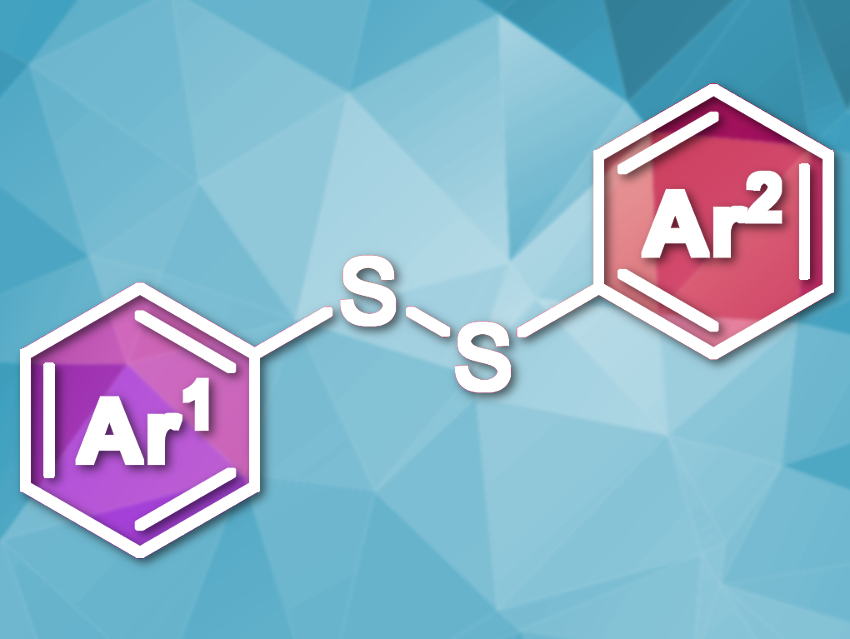Disulfide syntheses can be difficult because mixtures of thiols generally produce all possible symmetrical and unsymmetrical disulfides during coupling reactions. Prasenjit Mal, National Institute of Science Education and Research (NISER), Bhubaneswar, India, and colleagues have developed an umpolung (reversal of polarity) approach for the synthesis of unsymmetrical disulfides. In their approach, the usually nucleophilic sulfur is converted to an electrophilic sulfenium ion.
The electrophilic sulfenium ions were generated in situ from electron-rich thiols. These sulfenium ions are more stable than those generated from electron-deficient thiols, which makes the reaction selective. The reaction was performed using iodine as a catalyst, a 4-dimethylaminopyridine (DMAP)/water mixture as a promoter, and ethanol as the solvent. Electron-deficient thiols then react with the sulfenium ions.
A subsequent oxidation in air leads to the selective formation of the desired unsymmetrical disulfides (pictured). The reaction has a broad substrate scope and is performed in a single step under metal-free and mild conditions.
- Unsymmetrical Disulfides Synthesis via Sulfenium Ion,
Amarchand Parida, Khokan Choudhuri, Prasenjit Mal,
Chem. Asian J. 2019.
https://doi.org/10.1002/asia.201900620



